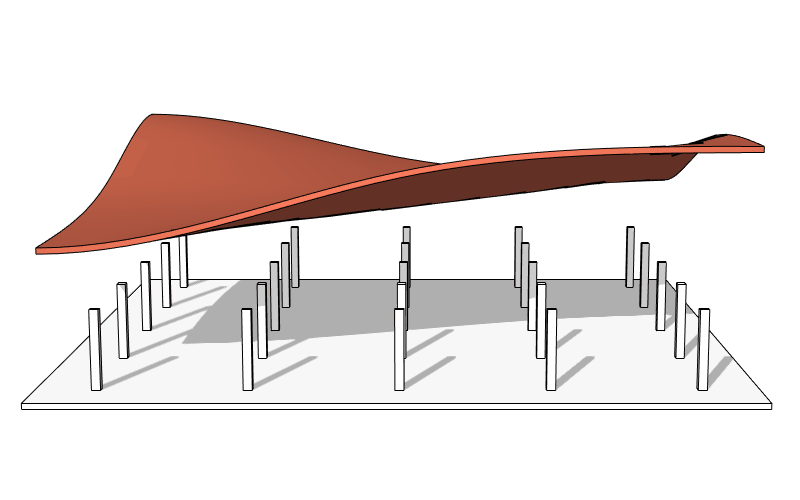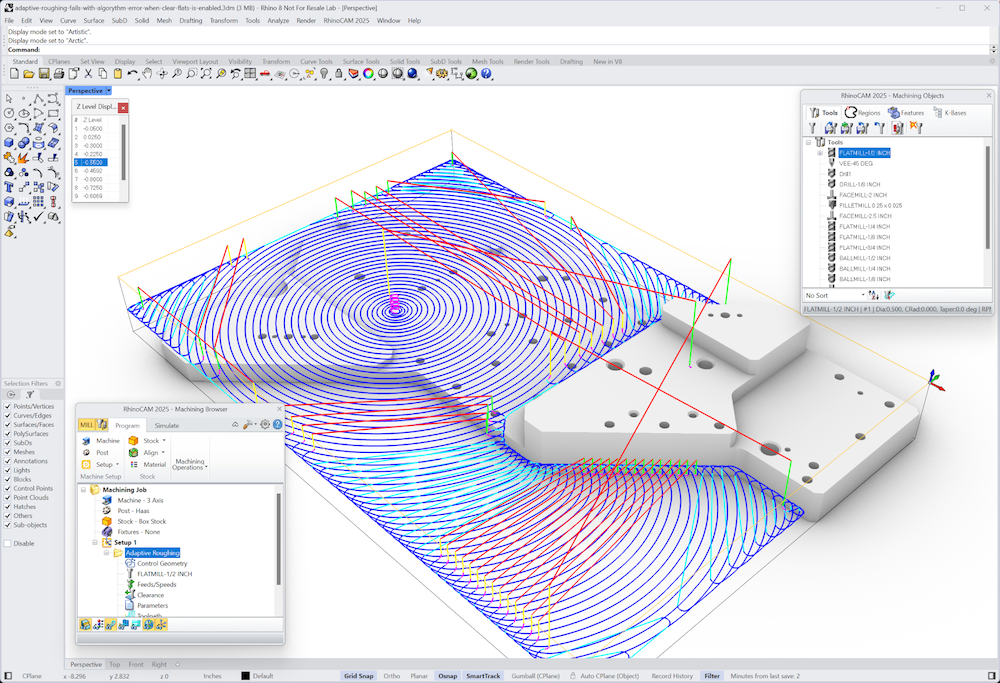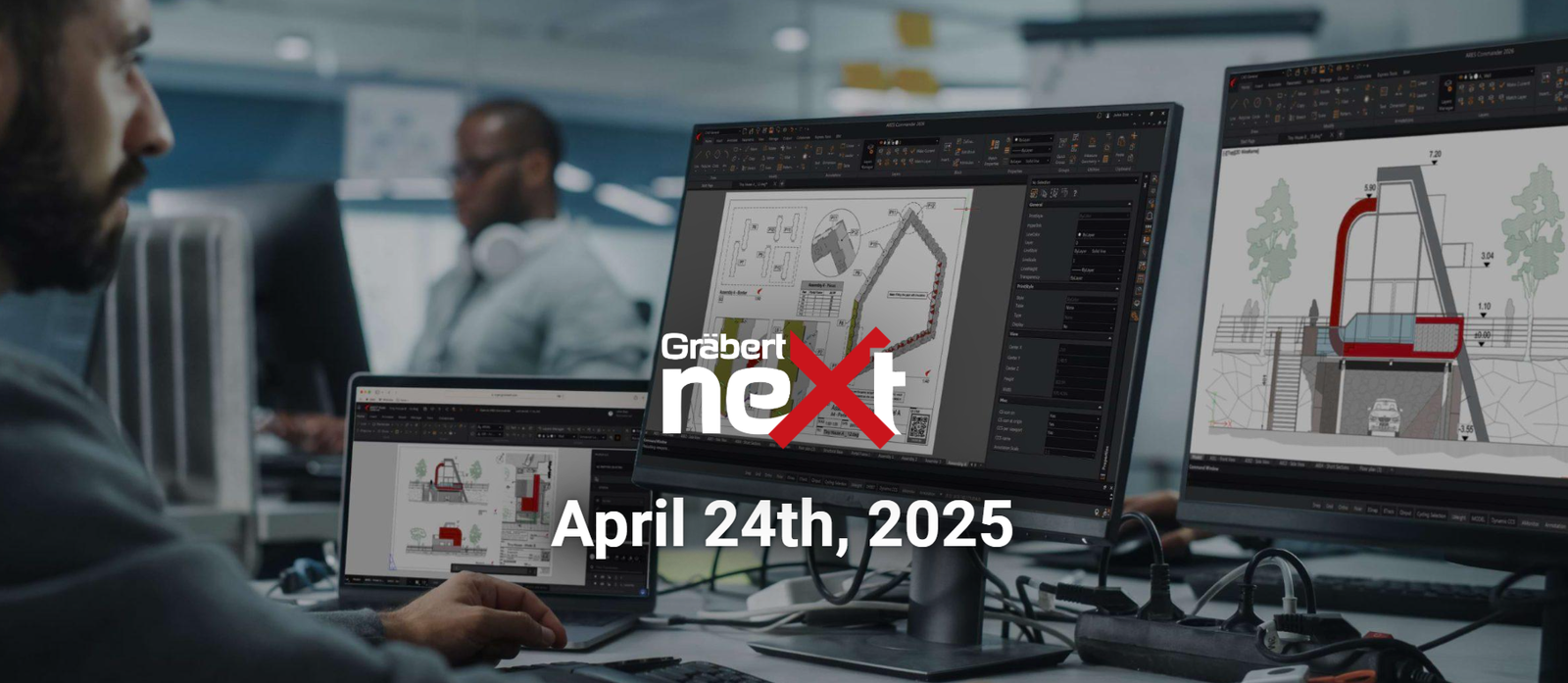Your Cart is Empty
Customer Testimonials
-
"Great customer service. The folks at Novedge were super helpful in navigating a somewhat complicated order including software upgrades and serial numbers in various stages of inactivity. They were friendly and helpful throughout the process.."
Ruben Ruckmark
"Quick & very helpful. We have been using Novedge for years and are very happy with their quick service when we need to make a purchase and excellent support resolving any issues."
Will Woodson
"Scott is the best. He reminds me about subscriptions dates, guides me in the correct direction for updates. He always responds promptly to me. He is literally the reason I continue to work with Novedge and will do so in the future."
Edward Mchugh
"Calvin Lok is “the man”. After my purchase of Sketchup 2021, he called me and provided step-by-step instructions to ease me through difficulties I was having with the setup of my new software."
Mike Borzage
Novedge Webinar #74: Q&A with Francesc Salla – Workflow and Architectural Design with VisualARQ for Rhino
June 13, 2013 7 min read
Time to catch up with our latest webinar. Last week, Francesc Salla guided us through VisualARQ for Rhino, and answered quite a few questions live. As time ran out, he agreed to answer the rest here on our blog. Enjoy.
Q: How much does the VisualARQ plug-in cost for student users?
A: The single educational license costs $95 and there is also LAB licenses for schools for $675.
[Editor's Note: prices at Novedge are lower, check our website for the latest pricing information]
Q: Francesc, for the dimensions, sections or plans made in your demonstration, do the drawings and dimensions update automatically?
A: The Section and Elevation Views, Opening Elevations, Schedule Tables and Spaces Areas update automatically or after selecting them and running the update command. Only the 2D Plan Views don’t update, although we are planning to change that in future versions.
Q: I've been playing with your implementation of VisualARQ in Grasshopper. It is a terrific start and I think why VisualARQ has so much power and potential — great job — can you address your plans or vision for VisualARQ? Where is it going? What do you want it to be? At the moment, it has so much potential and it is simple and elegant.
A: That's a question we ask ourselves at each release. As you may know we release a new VA version every three months or so. We basically focus the VisualARQ development on the users requests. So your ideas and suggestions are really welcome. Next big thing we are planning to do is the IFC import and object styles driven by Grasshopper definitions.
Q: Can you address when or if VisualARQ will be able to import IFC models?
A: This is something we are working on. It currently imports geometry from the IFC model but still not as Architectural objects, but plain Rhino geometry.
Q: Are the tables exportable as CSV files?
A: Sure, you can export them to CSV and Excel.
Q: It would be awesome if the Dynamic Section Tool was implemented in Grasshopper because then you could animate it with a slider. What do you think?
A: We will study your request and will consider whether to develop it in the future.
Q: Can you make your own objects? Is it possible to add properties/attributes to the components (e.g. thermal properties, price, etc.) and are these properties exportable as IFC models?
A: Not right now, but that’s something at the top of the wish list and we will work on it soon.
Q: Space and documentation commands are really interesting. Are these commands available from Grasshopper and/or exportable rather than viewed in the viewport?
A: We have just released the first WIP version of the VisualARQ Grasshopper Components, and there is still much to do. We are planning to include the option to create Spaces and Tables from Grasshopper in future releases. The tables created in VisualARQ are exportable into Excel.
Q: How much information is exported with an IFC-file? Are notes, names etc. exported as well?
A: Everything that you can enter in the UI and have a representation in IFC is exported.
Q: Thank you for a great webinar. I am looking forward to see a two-way integration with IFC. Excellent job with adding Grasshopper plug-ins.
A: Thank you. As mentioned previously, we are already working in the IFC import and we will keep on improving the current IFC export as well.
Q: Can we create interaction rendering with the Cutting Plane – like the one on your [VisualARQ] website? We'd like to slide the planes and see in to the house.
A: Not in the product, we use an in-house script to do it. But why not, it can be made public. By the way, you can run renders of the model with the Dynamic Section on.
Q: What is the integrity of the model/surfaces like? I am interested in workflow for 3D printing.
A: VisualARQ generates solids, I mean all the geometry it generates is closed poly surfaces, except for glasses in windows, which are actually single surfaces. But we have no way to ensure things have a minimum width or things like that, in order to guarantee that the model is printable in 3D. Of course a VisualARQ model can become a 3D printable model after some work on it.
Q: Will two meeting walls create one solid poly surface?
A: No, but it doesn't sound like something difficult to do if it is useful for 3D printing.
Q: In Rhinoceros 4 the V-Ray 1.x mats seems to work. What about Rhinoceros 5, V-Ray 1.6 and VisualARQ?
A: VisualARQ supports the same render engines than Rhino. That means that you can apply V-Ray 1-6 materials on VisualARQ objects. But sometimes they need to be exploded if you want to apply texture mappings on them, since texture mapping doesn’t work on Rhino blocks, and VisualARQ objects are actually blocks.
Q: Hi Francesc. Your examples are purely VisualARQ objects. What kind of files do we need to show and work with both furniture and lighting? Do they have to be .3DS file types?
A: Since VisualARQ runs on top of Rhino you can use any file format Rhino supports to work with your furniture blocks, for example DWG, SKP, 3DS, OBJ, and many others. They will all appear in Section, Plan Views, etc…
Q: We export parts (number, volume, height, lengths of booth systems) to Excel directly out of Rhino. Is it possible to do this with VisualARQ?
A: Yes, you can do that as long as the booth systems are created with VisualARQ objects. In future versions we are planning to quantify also Rhino geometry and export it into Excel.
Q: Hi Francesc, we use VisualARQ for booth-design in architecture, the slabs define the level manager and level views. Now we use srf to define the level views. Is there a better way?
A: The level manager helps you to work at different levels, either if there is a slab or surface there or if there isn’t. Just take into account that when you create a new level, you are also creating a construction plane on that level elevation, which helps you to easily switch from construction plane to another. The Level Manager also is meant to provide a 2D graphical representation of the level you create.
Q: So great! I would like to know if "extending" the wall to a slab for example creates a link in Revit too? For a structural analysis it is necessary to have these connections.
A: The walls extended to objects, once imported into Revit, lose their association. We will fix that in future versions.
Q: VisualARQ is slowly becoming a robust design tool for architecture. There are however several features in VisualARQ that do not function properly. For example, the ability to render the wall objects with different materials (even though the properties dialog gives options for doing so.) Also, blocks (such as fixtures and appliances) have to be exploded, otherwise these will not show up in VisualARQ generated drawings. I think solving these basic problems will be much more important than adding new features such as Grasshopper integration.
A: You are right, we'll make a note of that. We are planning to add the option to assign different render materials to wall components in VisualARQ 1.8. Blocks in VisualARQ drawings should appear. Only block references that are inserted as “block definition type = linked” are not displayed. We have even added recently the option to display meshes in VisualARQ Section and Plan Views.
Q: Hello! Is there a way to control the number of decimals places in the area calculation?
A: Thanks for your question, I guess it is a bug.
Q: To expand on my question, is it possible to create a dynamic dimensioned plan that updates with the model?
A: Not right now, but it is something on the list.
Q: Will the documentation tools (plans, sections, etc) incorporate non-VisualARQ created objects? Will plans and sections be cut through geometry created with other Rhino commands?
A: VisualARQ Section drawings and Plan Views work with any kind of geometry, not only VisualARQ objects.
Q: Is it possible to read the styles (wall, window, etc) created in Rhino with VisualARQ into Grasshopper or do they need to be recreated?
A: The VisualARQ objects created from Grasshopper can get any existing object style from that document you are working on. But the styles can’t be created from Grasshopper . I recommend you open a VisualARQ template in order to have all the styles available in Grasshopper. Otherwise, you can import styles from file using _vaStylesImport command.
Q: In perspective or iso viewport does the Rhino grid disappear or can it be set to be seen?
A: There is a setting that can be configured per display mode in Rhino. If you would prefer, Rhino can display the grid over objects.
Q: Can you select just the glass portion of the window in Grasshopper? I am interested in linking this with Ecotect through the Geco plug in, and all of the different materials need to be assigned individually.
A: Not right now. But it will be soon. We will integrate a component in GH which will explode any VisualARQ object into their parts. That way you will be able to select the window glass surfaces individually for any purpose.
Q: Good Afternoon, Mr. Salla! Can we create a slab with a double curvature? Is it possible with the VisualARQ plug-in for Grasshopper?
A: I'm sorry but not right now, since slabs in VisualARQ are generated like planar contour curves extruded vertically. Just create this slab (polysurface) using Rhino tools.
Q: Hi, can we UV map VisualARQ objects? I couldn't do it without exploding them.
A: Since VisualARQ objects are blocks, and Rhino does not support texture mapping on blocks, you need to explode them in order to apply texture mapping. We are studying different ways to improve that in the future.
Also in NOVEDGE Blog

Enhance Your Designs with VisualARQ 3: Effortless Geometry Extensions for Walls and Columns
April 30, 2025 8 min read
Read More
MecSoft Unveils RhinoCAM 2025 and VisualCAD/CAM 2025 with Enhanced Features
March 08, 2025 5 min read
Read MoreSubscribe
Sign up to get the latest on sales, new releases and more …



